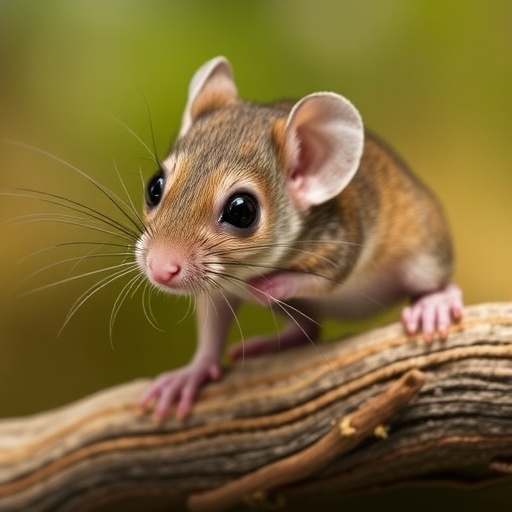A recent landmark study published in Science on August 21, 2025, has ignited the scientific community’s interest in the power of genetic rescue as a pivotal tool for conserving imperiled species like the Pacific pocket mouse. The research delves deep into the complex interplay between genetic diversity and species survival, championing an approach that introduces genetic variation from distinct populations to enhance overall population fitness. This method counters the historical caution many conservationists have exercised due to fears of outbreeding depression, where mixing genetically distinct populations could potentially reduce fitness.
Lead author Aryn Wilder, a Conservation Genetics researcher at San Diego Zoo Wildlife Alliance, emphasizes that the traditional focus on preserving the genetic “purity” of isolated populations may inadvertently exacerbate extinction risks. “When populations are small and isolated, genetic erosion can critically impair health and reproductive success,” she explains. “Our findings demonstrate that the advantages of genetic rescue significantly outweigh the potential disadvantages posed by chromosomal incompatibilities.”
.adsslot_3IjELB6ozm{width:728px !important;height:90px !important;}
@media(max-width:1199px){ .adsslot_3IjELB6ozm{width:468px !important;height:60px !important;}
}
@media(max-width:767px){ .adsslot_3IjELB6ozm{width:320px !important;height:50px !important;}
}
ADVERTISEMENT
The concept of genetic erosion refers to the gradual loss of genetic variation due to inbreeding and population bottlenecks. In small populations, deleterious mutations can accumulate, and the lack of genetic diversity diminishes adaptive potential. San Diego Zoo Wildlife Alliance researchers have investigated this phenomenon extensively within Pacific pocket mouse populations, revealing that genetic homogeneity correlates strongly with lower survival rates and reproductive success.
To counteract this trend, the research team implemented a genetic rescue strategy by deliberately breeding individuals from genetically distinct populations, thereby infusing new genetic material into the captive population. This cross-population breeding aimed to increase heterozygosity and introduce beneficial alleles that could enhance overall fitness. Remarkably, the resulting genetically diverse populations exhibited improved health markers and higher fecundity compared to non-mixed populations.
The study also confronts the chromosomal differences inherent in the populations involved. Pacific pocket mice from different geographic regions carry varying numbers of chromosomes, a factor that could theoretically lead to reproductive incompatibilities or outbreeding depression. However, the research reveals that the detrimental effects of such incompatibilities were minimal relative to the benefits accrued from increased genetic diversity. Simply put, the risk of extinction posed by genetic isolation far surpasses the risks associated with chromosomal mismatches.
San Diego Zoo Wildlife Alliance’s breeding program has expanded considerably since its inception, now involving over 700 individuals bred in controlled environments. The facility recently introduced 49 wild-caught mice to enrich the gene pool, underpinning the robust reproductive outputs observed. In 2024, this conservation push extended beyond captive settings with releases into a secondary wild site, resulting in the birth of 100 pups in natural habitats—a promising sign of successful reintroduction.
This research resonates beyond the Pacific pocket mouse, addressing a global conservation conundrum: how to preserve species that exist only in fragmented and genetically depleted populations. With approximately two-thirds of global species experiencing declines, the genetic rescue framework explored here offers a scalable, scientifically grounded blueprint for diminishing extinction risks in many taxa.
A critical takeaway from this work is the reframing of conservation goals—not from an emphasis on maintaining genetic distinctiveness but towards maximizing species-wide genetic health. This shift fundamentally challenges conservation orthodoxy and could revolutionize management strategies for endangered species worldwide.
Moreover, this study shines a spotlight on the vital role of zoos and managed care facilities as conservation bastions. Beyond serving as educational hubs, these institutions act as genetic reservoirs and centers of cutting-edge scientific research, able to conduct controlled breeding experiments that are infeasible in the wild. The San Diego Zoo Wildlife Alliance’s approach exemplifies how ex situ conservation support can directly inform and enhance in situ species recovery.
The implications of this research extend into policy, urging wildlife managers to reconsider restrictions on gene flow between conservation units. By facilitating informed facilitated gene flow, conservation programs can build resilience against the detrimental effects of inbreeding and ultimately improve species persistence probabilities.
This genetic rescue initiative for the Pacific pocket mouse demonstrates a harmonious blend of advanced genomic techniques with traditional conservation practice. It marks a pivotal step forward, heralding a new era where genetic insights empower conservationists to not just stave off extinction, but actively restore populations to robust health and ecological functionality.
In conclusion, the integration of genetic rescue strategies into wildlife recovery plans represents an evolution in conservation science, one that balances complexity and pragmatism to deliver tangible benefits. As species worldwide confront escalating threats, embracing genetic rescue may well prove to be an indispensable lifeline, giving imperiled animals like the Pacific pocket mouse a renewed chance at survival on their native landscapes.
Subject of Research: Animals
Article Title: Fitness benefits of genetic rescue despite chromosomal differences in an endangered pocket mouse
News Publication Date: 21-Aug-2025
Web References: http://dx.doi.org/10.1126/science.adn4666
Image Credits: Credit: San Diego Zoo Wildlife Alliance
Keywords: Conservation genetics, Wildlife, Endangered species, Genome sequencing, Genomics, Population genetics
Tags: biodiversity loss and recoverychallenges in genetic management of small populationsconservation biology advancementsconservation breeding programsgenetic diversity in endangered speciesgenetic rescue strategies for wildlifeimplications of outbreeding depressionPacific pocket mouse conservationSan Diego Zoo Wildlife Alliance effortsSouthern California native speciesspecies viability and survivalwildlife reintroduction initiatives





